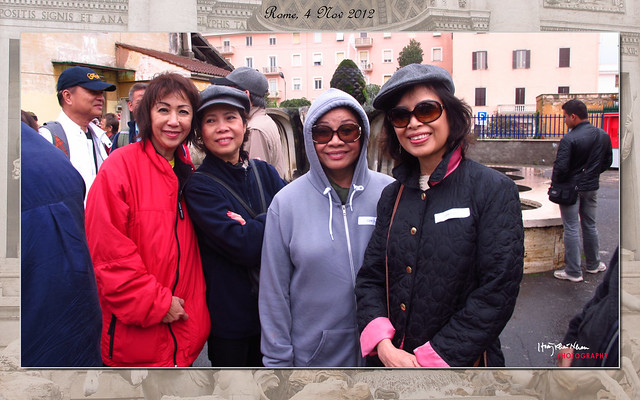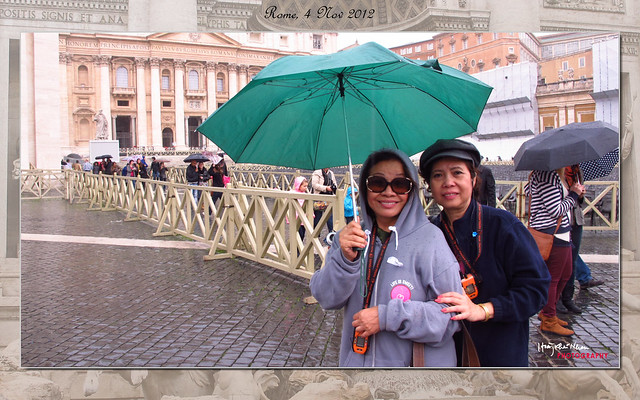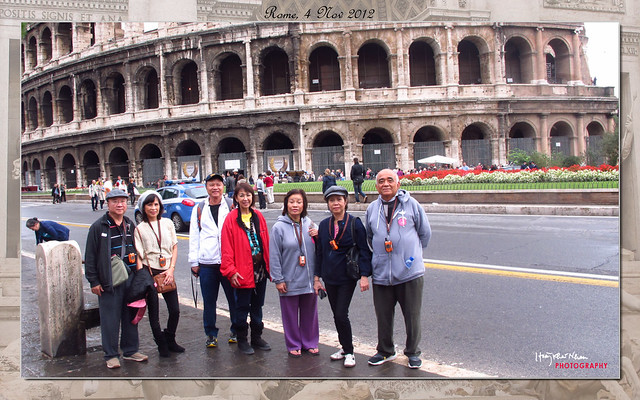Click on the thumbnail below for a photo slideshow!

Civitavecchia is a town and comune of the province of Rome in the central Italian region of Lazio. A sea port on the Tyrrhenian Sea, it is located 80 kilometers west-north-west of Rome, across the Mignone river. The harbor is formed by two piers and a breakwater, on which is a lighthouse. The name Civitavecchia means "ancient town".
Rome, November 4, 2012:
Click on the thumbnail below for a photo slideshow!

Rome is a city and special comune ("Roma Capitale") in Italy. Rome is the capital of Italy and the capital of Lazio (Latin: Latium). With 2.8 million residents in 1,285.3 km2 (496.3 sq mi), it is also the country's largest and most populated comune and fourth-most populous city in the European Union by population within city limits. Between 3.2 and 3.8 million people live in the Rome urban and metropolitan area. The city is located in the central-western portion of the Italian Peninsula, on the Tiber River within the Lazio region of Italy. Rome is referred to as "The Eternal City", a notion expressed by ancient Roman poets and writers. (Source: Wikipedia)
Vatican City, November 4, 2012:
Click on the thumbnail below for a photo slideshow!

The Vatican City, one of the most sacred places in Christendom, attests to a great history and a formidable spiritual venture. A unique collection of artistic and architectural masterpieces lie within the boundaries of this small state. At its centre is St Peter's Basilica, with its double colonnade and a circular piazza in front and bordered by palaces and gardens. The basilica, erected over the tomb of St Peter the Apostle, is the largest religious building in the world, the fruit of the combined genius of Bramante, Raphael, Michelangelo, Bernini and Maderna.
Roman Colosseum, November 4, 2012:
Click on the thumbnail below for a photo slideshow!

The Roman Colosseum is the most famous monument to have survived from the classical world. It was built nearly two thousand years ago for the purpose of hosting violent gladiator games. Thousands of men and animals fought for their lives in the sandy arena. A few gladiators and warriors found glory there. Some even found fame and riches but many more died an anonymous death, providing entertainment for eager Roman spectators.
The powerful associations and images evoked by the Roman Colosseum express both the majesty and might of the Roman empire. It dominates the space it occupies, towering above the surrounding Roman streets and buildings. It is a symbol of the imperial might and architectural ingenuity of the Roman empire that dominated the ancient Mediterranean world for centuries. The story of the amphitheater and its gladiator games from their origins through the zenith of their development and into the decline and eventual fall provides a unique insight into the evolution and fall of the Roman empire itself.
Emperor Vespasian, founder of the Flavian Dynasty, started construction of the Colosseum in 72 AD. It was completed in 80 AD, the year after Vespasian's death.
The huge amphitheater was built on the site of an artificial lake, part of Nero's huge park in the center of Rome which also included the Golden House (Domus Aurea) and the nearby Colossus statue. This giant statue of Nero gave the building its current name.
The elliptical building is immense, measuring 188 m by 156 m and reaching a height of more than 48 meters (159 ft). The Colosseum could accommodate some 55,000 spectators who could enter the building through no less than 80 entrances.
Above the ground are four storeys, the upper storey contained seating for lower classes and women. The lowest storey was preserved for prominent citizens. Below the ground were rooms with mechanical devices and cages containing wild animals. The cages could be hoisted, enabling the animals to appear in the middle of the arena.
The southern side of the Colosseum was felled by an earthquake in 847. Parts of the building - including the marble facade - were used for the construction of later monuments, including the St. Peter's Basilica.
No comments:
Post a Comment